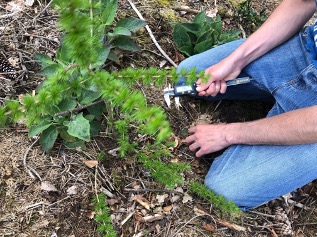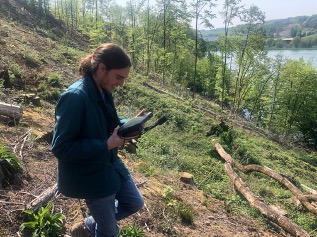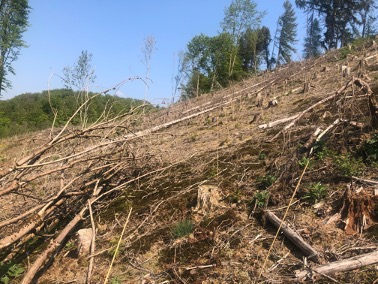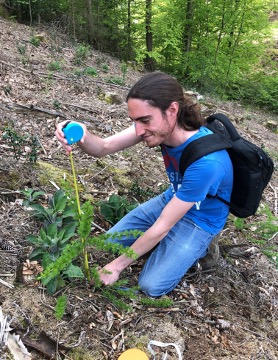High survival rate: case study climate forest (Klimawald) in Germany
At Life Terra, we want to be transparent not only in the number of trees planted during the project but also with the success of these reforestations. This is why we regularly monitor some of the most representative planting sites of a particular region. In this case, we analysed our tree-planting project Klimawald in Ehreshoven, Germany.
For the last two years, this area of Germany has suffered from long periods of drought that have left soils with almost no groundwater up to 4 meters. According to the Federal Ministry of Food and Agriculture (BMEL), 2020 was the worst year of tree mortality in Germany since they started registering it in 1984.
Furthermore, climate change makes trees more susceptible to damage from pests, which spread easily in the common single-layered monoculture stands of German forests. “We currently see significant changes in nature in terms of higher overall temperatures and irregular rains, for which we ourselves are responsible. This means we will ultimately have to experiment to see how we can help nature" explains Jörg Deselaers, Curator at Stift Ehreshoven.
This particular land was covered with a monoculture of spruce trees, the most important tree for log production in this region. Like so many other places in Europe this spruce stand also had become heavily infested with bark beetles. After the obligatory removal of these trees, it was important to quickly cover the soil and try to adapt the new planting plan to be more diverse and more resilient to future climate shocks.
Together with the landowner, we planted our first “climate forest” with the goal of creating a stable mixed forest that is expected to adapt much better to the changing climate conditions in this region. The 5-hectare area (approx.) was planted with 19,500 trees of Spanish origin of 16 deciduous and coniferous tree species in March 2021 (see complete list here). The idea is that Spanish saplings (used to withstand a temperature range of -10 to +40 degrees C and long periods of drought) might be better equipped to deal with the very fast changing environmental conditions than some German varieties.
One and a half years after the tree planting, we have again monitored the survival and growth of the trees and established that the current survival rate is over 95%. We are very pleased with this intermediate result, particularly given the intense heat conditions of last summer and see that the trees are adapting very well to the new climate and soil conditions. We will keep monitoring this site closely to check on the performance of the trees and report back. Below already some pictures of the current situation:



